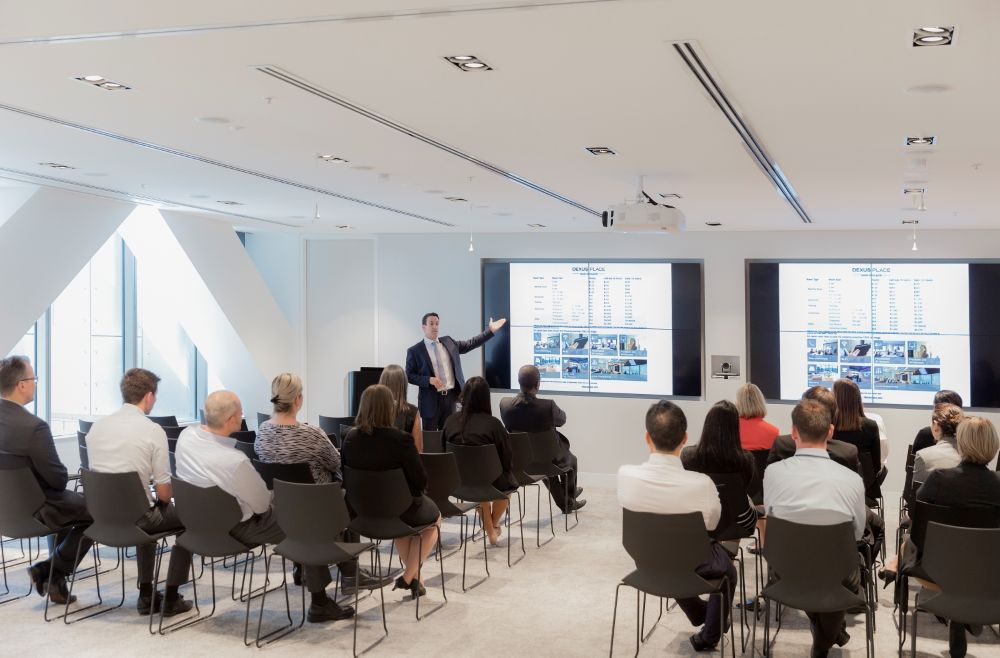The universal problem of inefficient meetings — those lengthy, directionless sessions that drain energy and yield few results — is a pervasive challenge in the modern workplace. Fortunately, the structured principles provided by the Agile methodology offer a clear solution to this costly time sink. By reshaping how teams collaborate, Agile provides a framework designed for momentum and decisive action, moving away from passive information sharing.
This guide is designed to provide you with a comprehensive understanding of agile meetings and their inherent purpose. We will walk you through implementing these principles and structures to foster efficiency, clarity and innovation across your teams, ensuring every session contributes directly to your ultimate business goals.
Why Agile Meetings Are Different
The core philosophy that distinguishes Agile meetings is their inherent discipline: they are strictly time-boxed, intensely goal-oriented and fundamentally focused on continuous inspection and adaptation, not passive information consumption. This is a dramatic departure from the traditional model, which often results in lengthy, unproductive sessions where discussion meanders and action items are unclear.
This fundamental difference means adopting a proper agile meeting structure is essential for maintaining momentum and enabling rapid, decisive action within a dynamic business environment. Agile meetings transform collaboration from a time drain into a powerful mechanism for achieving focused, incremental progress.
Key Agile Meeting Types and Their Purpose
The Agile methodology leverages several distinct meeting types, each serving a clear, focused objective within the development cycle. These include:
- The Daily Standup: The core purpose of this meeting is to quickly align the team, identify obstacles (blockers) and review recent progress. This session is strictly time-boxed, typically 15 minutes, and focuses on what was done, what will be done and what challenges exist.
- The Retrospective: This is a critical session dedicated to continuous process improvement. The team reviews the past work cycle to honestly assess what went well and what opportunities exist for future enhancement.
- The Planning Session: This meeting is essential for defining the scope, setting clear goals and establishing the priorities for the upcoming work cycle. It ensures the entire team is aligned on the immediate future direction.
- The Review/Demo: The purpose of this meeting is to showcase the completed, usable features or product updates to stakeholders and key clients. This meeting is crucial for gathering direct feedback and validating the direction of the work.
Mastering the Agile Meeting Structure
Beyond knowing the meeting types, maintaining a rigid, results-driven structure is key to maximising efficiency in agile meetings. Here’s what to keep in mind:
- Timeboxing and Discipline: It’s absolutely necessary to strictly timebox every session to maintain focus and respect the time commitment of all participants. This discipline prevents discussions from unnecessarily derailing or extending.
- Clear Agendas and Facilitation: Advisably, establish specific, attainable goals for every meeting and utilise a dedicated facilitator. The facilitator ensures discussions remain on track and are focused solely on the agenda items.
- Actionable Outcomes: Every agile meeting must conclude with a clear, documented list of next steps, assigned owners and specific deadlines. The session is only productive if it results in tangible, forward-moving action items.
- Optimal Attendance: Adopt the rule of inviting only those participants who are essential for achieving the meeting’s immediate goal. This approach maintains efficiency, minimises distractions and respects the focus time of non-critical team members.
Applying Agile Principles to Non-Agile Meetings
The foundational discipline of the Agile framework can also be successfully applied to virtually all other organisational meeting types. Here’s how:
- Timeboxing: Implement strict time limits for every session, regardless of its purpose (e.g., 1:1s or strategy sessions). This simple discipline maintains focus and ensures respect for everyone's schedule.
- Focusing on Clear Outcomes: Ensure every meeting starts and ends with a specific, defined goal or desired result. This practice shifts the purpose from passive discussion to active, forward-moving work.
- Bias Toward Decision: Actively push for decisions to be made during the allotted time, rather than allowing discussions to endlessly meander. Establishing this bias drastically improves the actual business value of the meeting.
The Environment: Flexible Spaces for Focus
The physical environment profoundly impacts the success of focused, time-boxed collaboration, which is a cornerstone of agile meetings. Professional coworking spaces, such as those offered by The Work Project, present an ideal solution by providing the necessary quiet and reliable infrastructure, including collaboration spaces, business-grade Wi-Fi and high-quality displays.
On top of this, The Work Project also offers professional meeting rooms in Sydney and other locations across Australia. These dedicated spaces are equipped with advanced AV tools, integrated digital whiteboards and soundproofing, ensuring the required privacy and technology for successful, focused Agile sessions.
Sustaining Your Agile Edge

Employees having an agile meeting in the pantry
Mastering the foundational principles of the Agile methodology fundamentally transforms team output, driving organisational efficiency and collective success. However, to fully empower your team’s focus and collaboration, it's also essential to invest in an agile work environment designed for optimal performance.
So, ready to achieve a new level of organisational success and efficient execution? Explore The Work Project's range of coworking spaces and meeting room solutions today to get started!






